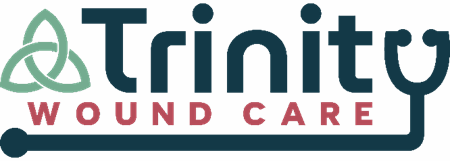
Understanding and Managing the Challenges of Living with Bed Sores
Key Takeaways
- Understanding bed sores is crucial for effective prevention and management, improving patient outcomes and quality of life.
- Proactive prevention strategies like repositioning and proper skin care can significantly reduce the risk of developing pressure ulcers.
- Collaborative care involving healthcare professionals enhances recovery, offering personalized treatment plans and rehabilitation services.
Living with bed sores, medically known as pressure ulcers, can be overwhelming for patients and caregivers alike. These painful wounds pose significant health risks, requiring careful management and informed prevention strategies. In this article, we will explore the nuances of bed sores, their causes, and effective management techniques to empower patients with the knowledge needed to support their healing journeys.
What Are Bed Sores?
Bed sores, or pressure ulcers, are injuries to the skin and underlying tissues caused by prolonged pressure on the skin. They often develop in areas where bones are close to the skin, such as the heels, hips, and tailbone. When pressure reduces blood flow to these areas, the skin and tissues can break down, leading to open sores. These wounds not only cause discomfort but can also lead to serious infections if not properly managed.
The Development Process
The progression of bed sores can vary, initially manifesting as red or purplish areas on the skin that may later develop into open wounds. Early stages might only present minor skin discoloration, but without intervention, they can rapidly worsen. Early detection and treatment are vital to prevent further complications and promote healing.
Who Is at Risk?
Individuals most at risk are those who experience limited mobility due to illness or injury, making it difficult for them to change positions frequently. Without regular movement, the continuous pressure decreases circulation, leading to tissue damage and bed sores. Elderly patients and those with chronic conditions are particularly vulnerable, highlighting the need for vigilant care.
Causes and Risk Factors
Bed sores primarily result from sustained pressure on the skin, which impairs blood circulation. This lack of blood flow leads to tissue damage and eventual ulcer formation. In addition to pressure, several other factors contribute to the development of bed sores.
Limited Mobility
Limited mobility is a significant risk factor, often arising from medical conditions like spinal cord injuries, which hinder an individual’s ability to shift positions independently. Individuals with paralysis or severe illnesses are particularly susceptible to developing pressure ulcers. Prolonged bed rest without proper repositioning exacerbates this risk.
Moisture and Skin Integrity
Moisture from sweat, urine, or feces can exacerbate skin vulnerability, increasing the likelihood of bed sores. Excessive moisture weakens the skin’s protective barrier, making it more prone to breakdown. Furthermore, poor nutritional status can impede skin integrity and healing, making balanced nutrition crucial for those at risk.
Sensory Perception Loss
Loss of sensory perception, common in certain medical conditions, diminishes an individual’s awareness of pain or discomfort, leading to prolonged pressure on vulnerable areas. Without the sensation prompting position changes, pressure can remain unrelieved, accelerating ulcer development. Identifying these risk factors is essential for implementing preventive measures and minimizing the occurrence of bed sores.
Prevention and Management Techniques
Understanding how to prevent and manage bed sores is vital for individuals and caregivers dealing with this condition. Incorporating effective strategies into daily routines can significantly reduce the risk of developing pressure ulcers.
Prevention Strategies
Preventive measures focus on reducing pressure, improving skin care, and promoting overall health. Regularly changing positions is one of the most effective ways to prevent bed sores. For bedridden individuals, repositioning every two hours is recommended to alleviate pressure on vulnerable areas. Incorporating gentle exercises, if possible, can also stimulate circulation.
Those using wheelchairs should shift their weight every 10 to 15 minutes to reduce pressure and maintain circulation. Additionally, using specialized mattresses or cushions can help distribute weight and relieve pressure points. Ensuring the bedding is smooth and wrinkle-free can prevent additional friction on the skin.
Maintaining healthy skin is crucial in preventing bed sores. Clean and dry skin reduces the risk of infection, while moisturizers keep skin supple and resilient. A well-balanced diet rich in vitamins and minerals supports skin health and aids in tissue repair. Adequate hydration also plays a vital role in maintaining skin elasticity.
Tips for Repositioning
Repositioning plays a critical role in preventing bed sores and enhancing comfort. To achieve this, individuals and caregivers can implement simple yet effective techniques.
Using pillows or cushions to support bony areas helps distribute pressure evenly and reduces the risk of skin breakdown. Placing a pillow under the calves, for instance, can help elevate the heels and minimize pressure. Specialized devices like heel protectors can offer additional relief.
It’s also important to avoid raising the head of the bed too high, as this can cause sliding and increase pressure on the sacrum and lower back. Caregivers should assist individuals in shifting positions carefully to prevent friction and shear, which can damage the skin. Keeping the head of the bed at the lowest safe height reduces the risk of shear injuries.
Tips for Skin Care
Proper skin care is a fundamental aspect of preventing and managing bed sores. Keeping the skin clean and dry is essential for reducing the risk of infection and promoting healing.
Gentle cleansing with mild soap and water helps maintain skin health and prevent irritation. After washing, it’s crucial to pat the skin dry thoroughly to avoid moisture buildup. Inspecting the skin daily for signs of redness or breakdown can lead to early intervention.
Applying moisturizers regularly keeps the skin hydrated and reduces dryness, which can make it more susceptible to injury. For existing sores, removing dead tissue through debridement and applying special dressings can aid healing and prevent infection. Antimicrobial dressings may be used to reduce bacterial load in the wound.
Diagnosing and Treating Pressure Sores
Diagnosing and treating bed sores is vital for preventing complications and promoting recovery. Healthcare providers assess the severity of pressure ulcers and tailor treatment plans accordingly.
Stages of Pressure Ulcers
Bed sores are categorized into stages based on their severity:
- Stage 1 involves a red, blue, or purplish area of skin, indicating a potential ulcer. The skin may feel warmer or cooler than surrounding areas.
- Stage 2 presents as an open sore or blister, often accompanied by pain and swelling. The ulcer is superficial, affecting the top layers of skin.
- Stage 3 sores extend deeper into the tissue, resembling a crater and exposing fat tissue. There may be signs of infection at this stage.
- Stage 4 represents severe damage involving muscle, bone, or joints. This stage carries a high risk of serious complications.
- Unstageable full-thickness injuries occur when the wound is covered with dead tissue, making assessment challenging. Accurate staging guides treatment decisions and interventions.
Treatment Approaches
Treatment varies based on the ulcer’s severity and stage. Reducing pressure on the affected area is essential to promote healing. This involves using specialized mattresses or cushions to alleviate pressure and enhance comfort. Frequent repositioning remains a cornerstone of care.
Cleaning the wound with saline or saltwater and applying appropriate dressings help maintain a clean environment and prevent infection. Advanced dressings may include hydrogels, foam, or alginate to manage moisture and support healing. In some cases, healthcare providers may prescribe antibiotics or pain relievers to address infections and alleviate discomfort.
In severe cases, surgical intervention may be necessary to remove dead tissue or close the wound. Early intervention and consistent wound care are crucial for successful treatment outcomes and preventing further deterioration.
Complications and Consequences
Untreated or inadequately managed bed sores can lead to severe complications, highlighting the importance of timely intervention and comprehensive care.
Potential Complications
Complexities such as sepsis and organ failure can arise from pressure ulcers, posing life-threatening risks. These conditions result from infections spreading to the bloodstream, underscoring the need for vigilant monitoring and prompt treatment.
Joint infections can develop when pressure injuries occur near joints, leading to inflammation and potential mobility issues.
Decubitus ulcers, characterized by deep tissue damage, can also arise when pressure sores progress. These complications can significantly impair a person’s ability to recover and may require intensive medical interventions.
The pain and discomfort associated with bed sores require effective management to prevent a decline in quality of life. Integrating pain relief measures into treatment plans is essential for ensuring patient comfort and recovery. Psychological effects, such as depression and anxiety, may also occur, necessitating holistic care approaches.
Managing Pressure Ulcer Pain
Pain associated with pressure ulcers can be debilitating, impacting an individual’s well-being and recovery. Addressing pain promptly and effectively is crucial for enhancing comfort and facilitating healing.
Pain Management Strategies
Healthcare providers play a pivotal role in developing personalized pain management plans for individuals with bed sores. Pain relievers, both oral and topical, can help alleviate discomfort and improve quality of life. Adjusting medications based on pain levels ensures adequate relief.
In addition to medication, non-pharmacological approaches such as relaxation techniques and gentle massage can help reduce pain and promote relaxation. Using heat or cold therapy may also provide temporary relief. Engaging individuals in pain management discussions ensures a collaborative approach to addressing their needs.
Regular assessment of pain levels allows healthcare providers to adjust treatment plans and interventions, ensuring optimal pain control and overall well-being. Effective pain management contributes to better sleep, mood, and participation in rehabilitation activities.
Rehabilitation and Recovery
Recovering from bed sores involves a comprehensive approach that addresses physical, nutritional, and emotional aspects of healing. Rehabilitation aims to restore function, enhance mobility, and promote overall health.
Comprehensive Rehabilitation
- Physical therapy is a key component of rehabilitation, focusing on improving mobility, strength, and flexibility. Personalized exercise programs help individuals regain independence and prevent further complications. Occupational therapy may assist with adapting daily activities to promote healing.
- Wound care specialists collaborate with patients to develop effective wound management strategies, ensuring timely healing and preventing recurrence. They may employ advanced therapies such as negative pressure wound therapy or electrical stimulation.
- Nutritional support plays a vital role in promoting tissue repair and immune function. Dietitians can create meal plans rich in protein, vitamins, and minerals essential for healing. Supplements may be recommended to address deficiencies.
By integrating these elements into a cohesive rehabilitation plan, individuals can achieve optimal recovery outcomes and regain their quality of life. Psychological support may also be provided to address the emotional challenges associated with prolonged healing.
Living with Bed Sores
Living with bed sores requires ongoing management and support to prevent complications and enhance well-being. Collaboration with healthcare providers ensures effective care and long-term health maintenance.
Developing a Care Plan
Working closely with healthcare professionals, individuals can develop personalized care plans that address prevention, treatment, and ongoing monitoring. Regular follow-up appointments allow for adjustments to treatment strategies based on progress and changing needs. Care plans may include schedules for repositioning, skin inspections, and wound dressing changes.
Education and empowerment are central to successful self-management. Patients and caregivers are equipped with knowledge and resources to identify early signs of pressure ulcers and implement preventive measures. Support groups or counseling services may offer additional assistance.
By fostering open communication and active participation, individuals can take charge of their health and well-being, minimizing the impact of bed sores on their daily lives. Emphasizing self-care practices enhances independence and confidence in managing their condition.
Conclusion
Bed sores, or pressure ulcers, are a serious medical condition that requires vigilant attention and comprehensive care. By understanding the causes, risk factors, and prevention strategies, individuals can take proactive steps to reduce their risk of developing bed sores and effectively manage existing wounds.
With timely intervention and collaboration with healthcare providers, patients can achieve optimal healing outcomes and improve their quality of life. By integrating prevention techniques, personalized care plans, and rehabilitation efforts, individuals can overcome the challenges of living with bed sores and regain their independence.
Need Help with Bed Sores?
If you or a loved one are dealing with bed sores and seeking expert care, Trinity Wound Care in Las Vegas, NV, is here to help. Our dedicated team specializes in comprehensive wound management and personalized treatment plans to promote healing and enhance quality of life.
Contact Trinity Wound Care today to take the first step toward recovery and healthier living.


